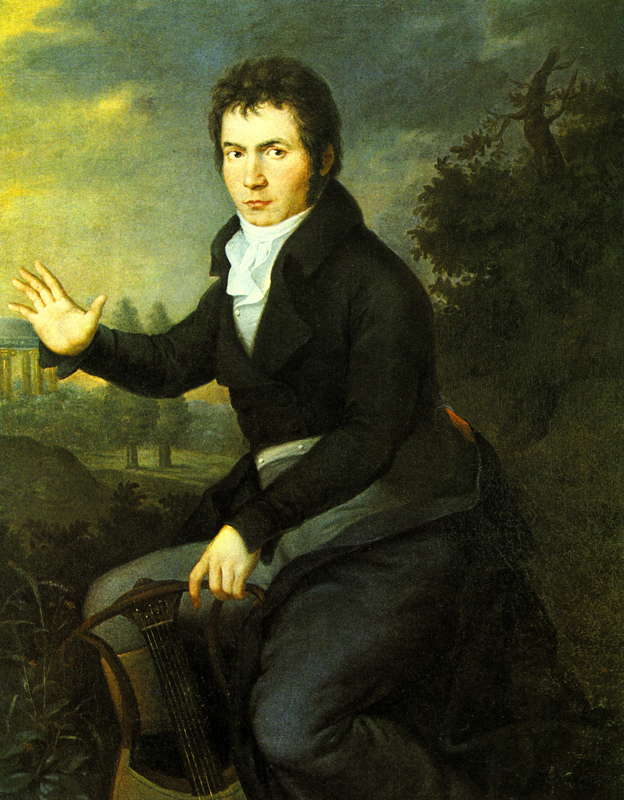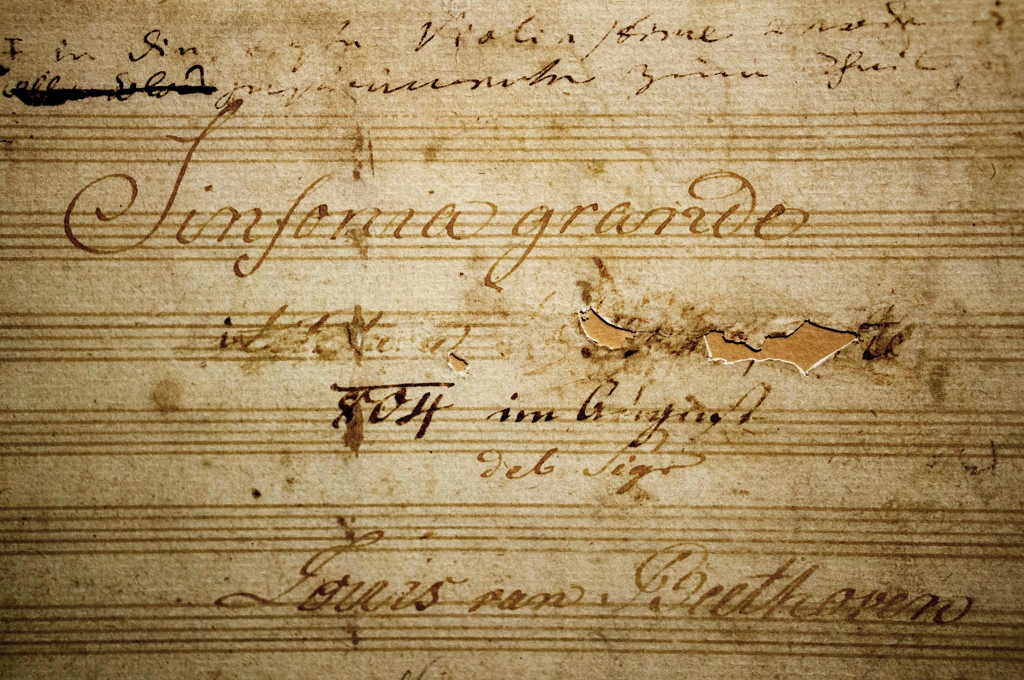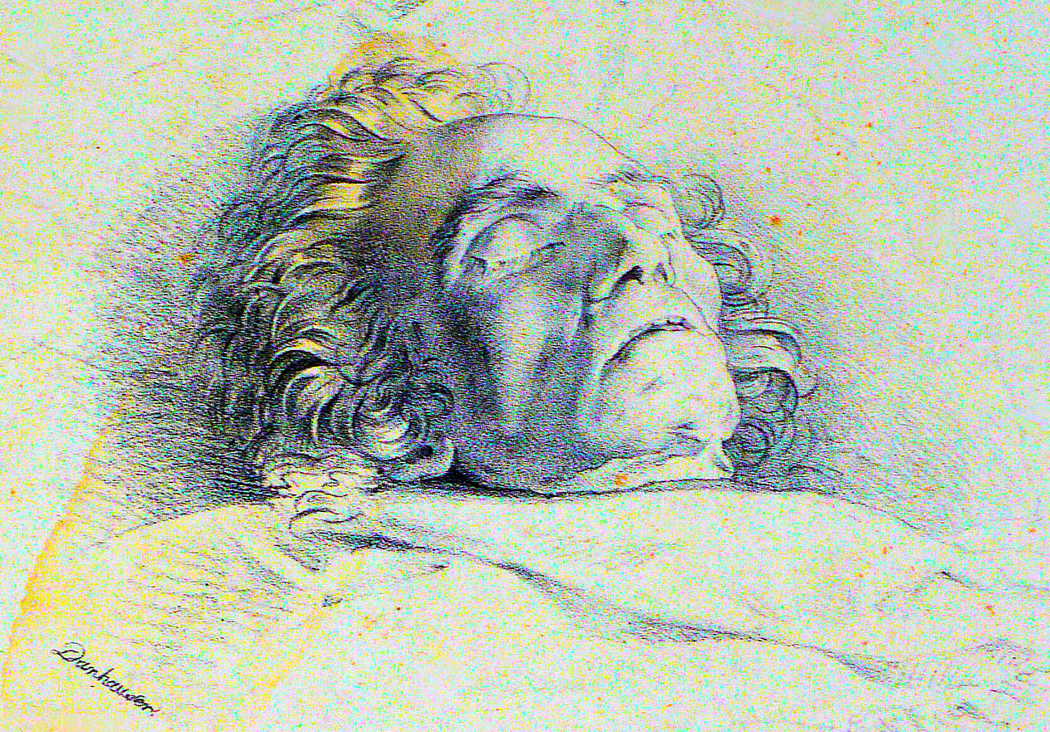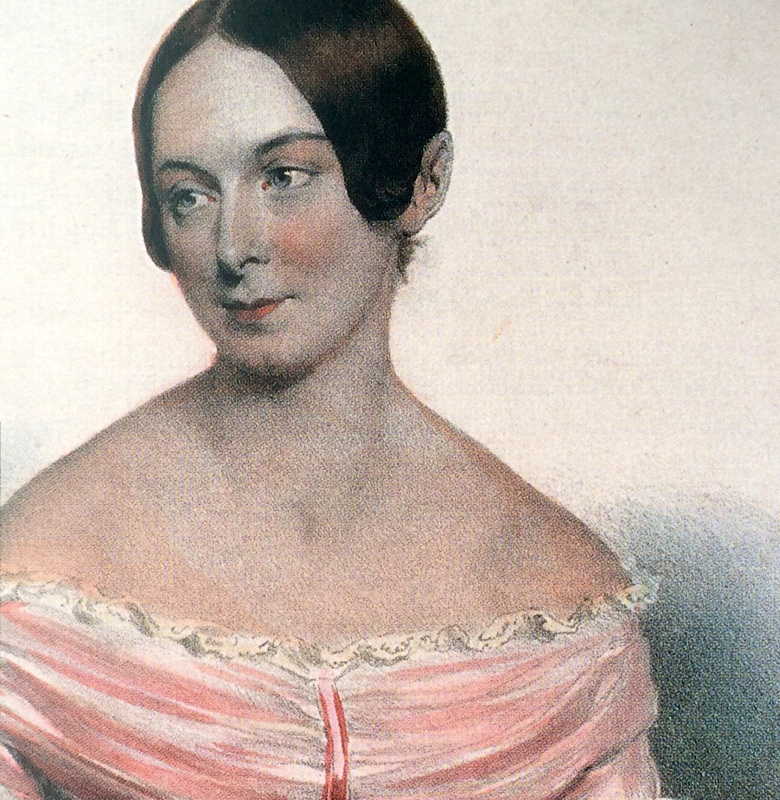 CENTRAL ENGLAND: Mike Wheeler's concert reviews from Nottingham and Derbyshire feature high profile artists on the UK circuit - often quite early on their tours.
CENTRAL ENGLAND: Mike Wheeler's concert reviews from Nottingham and Derbyshire feature high profile artists on the UK circuit - often quite early on their tours.
Creative High Points

GEORGE COLERICK tells the story
of Beethoven's influence on
Romantic and nineteenth century music
At the first rehearsal of Beethoven's fifth symphony, the performers were more amused than shocked at the sound and intensity of its opening. A few years earlier, reactions would have been more hostile but by 1805, social attitudes were becoming more enlightened following the impact of the French Revolution. Beethoven was the man to exploit this new freedom, and with his originality and vision, he would become the greatest influence on Romantic and nineteenth century music.

An 1804-5 portrait of Ludwig van Beethoven (1770-1827)
by German painter Joseph Willibrord Mähler (1778-1860)
Beethoven grew up during the great Classical period of the late eighteenth century, with its sophisticated musical forms. He left Bonn for Vienna in the early 1790s where he was taught briefly by Joseph Haydn. His early compositions showed a special admiration for Mozart's works. In particular, sonata form as then established was to be the model for the first movement of all symphonies, and so remained well into the twentieth century. Its logic was its strength. Song has always tended to be more interesting for having two contrasting melodies. In the symphony, so-called sonata form strengthened this with two subjects or groups of themes. The first was to be developed, leading to a climax then a resolution. It was optional whether the finale followed that pattern.
Variety was assured at first by a sequence of tempi in the four movement symphony: slow introduction, then a brisk first movement (allegro); next slower (andante) or slow (lento); then minuet and trio; finally a finale (allegro) or very fast (presto). The last three movements had freer use of two themes (ABA, ABAB or ABABA), contrasting in shape, mood, pace and key. It was the most perfectly satisfying form for a work lasting some half an hour. Chamber music conformed to sonata form but tended to omit the third movement, the dance. This, the stately minuet, was unsuited to Beethoven who decided to replace that 3/4 rhythm with a very energetic one, a scherzo, Italian for joke.
Genius is privileged to break rules; Haydn would have recognised he had one on his hands though he found him a difficult pupil. Beethoven had started his composing life, choosing the piano sonata as the main form for developing his creative skills. This early phase of composing lasted roughly until 1803, the date of his Eroica Symphony. Conceived on a larger scale, more powerful than anything beforehand, it had been dedicated to Napoleon, but when he made himself Emperor of the French in 1804, Beethoven furiously tore out the title page. Freedom meant that much to him, both politically and for his creative self.

The title page of Beethoven's Eroica Symphony,
showing the removed dedication to Napoleon Bonaparte
At first sympathetic to the Revolution, with the French advancing and briefly occupying Vienna, he was in full political disillusion, and he gradually turned to religion. Those were the years when his impending deafness ended his career as a pianist, and threatened his composing facility. There were also disappointments in love, so that Beethoven was facing one of several critical phases in his emotional life.
Yet this had a positive effect on his creativity, and his middle period is now considered as having lasted until about 1815. It passed the bands of traditional harmony, form and emotional restraint during the first of these years. The Fifth Symphony's power was startling, the orchestra was at times used percussively. Other creative high points included the Appassionata Sonata, his opera, Fidelio, and the Triple Concerto.
Later came the Seventh Symphony, a sequence of dances, and two very commanding works, the Fifth Piano Concerto and probably the greatest of all piano trios, the opus 97, named after his friend, the musician Archduke Rudolph. He had shown ways to break the Classical mould, influencing the early Romantics who came to prominence a few years after his death in 1827.

Lithograph of Beethoven on his deathbed by Austrian painter Josef Danhauser (1805-1845)
Beethoven could not live comfortably with other humans, a state of depression around 1815 curtailing his composing for some two years. He then came back helped by a much stronger model, a six-octave Broadwood grand piano, and his Hammerklavier Sonata exploited this power to the full, so marking the start of his final period. Yet three more sonatas completed his purposes for the instrument. For the short period remaining to his life, he turned his attention to the string quartet, and he composed no other chamber music afterwards. There were to be five quartets, uniquely complex in style and development, not understood by many at the time, but related to intense spiritual experiences. They included a movement in which Beethoven gave thanksgiving to God for recovery from an illness.
He was experimenting with melody and harmonies. The Grosse Fuge which was to be the finale of the opus 130 quartet was so dominant that Beethoven was advised to separate it from the other movements, so that it became his final publication. One century later, Stravinsky praised it as a masterpiece of his own speciality, rhythm.
Beethoven cared for the fate of humanity, eventually finding inspiration for grand statements by 1823 in his Missa Solemnis and Ninth Symphony, the Choral. This was larger and more complex than any previous symphony. Though the first three movements are very imposing, they are then subjected to an unprecedented ritual. In a sequence of orchestral recitative, their themes are in turn rejected, then a soloist in a moment of great drama introduces the dominant melody to the words of Schiller's Ode to Joy, the Choral finale. This movement eclipsed his Choral Fantasy written years earlier, a most original single movement, vigorous and extrovert, later regarded as an apparent run-in.

Austro-Hungarian contralto Caroline Unger (1803-1877) was one of
the soloists in the first performance of Beethoven's Ninth Symphony,
and is credited with turning the deaf composer round, at the
end of the performance, to face his applauding audience
The Ninth Symphony and the Missa Solemnis with the last sonatas and quartets are works that the music world is still learning from two centuries later.
Copyright © 16 December 2019
George Colerick,
London, UK

FURTHER INFORMATION: LUDWIG VAN BEETHOVEN



